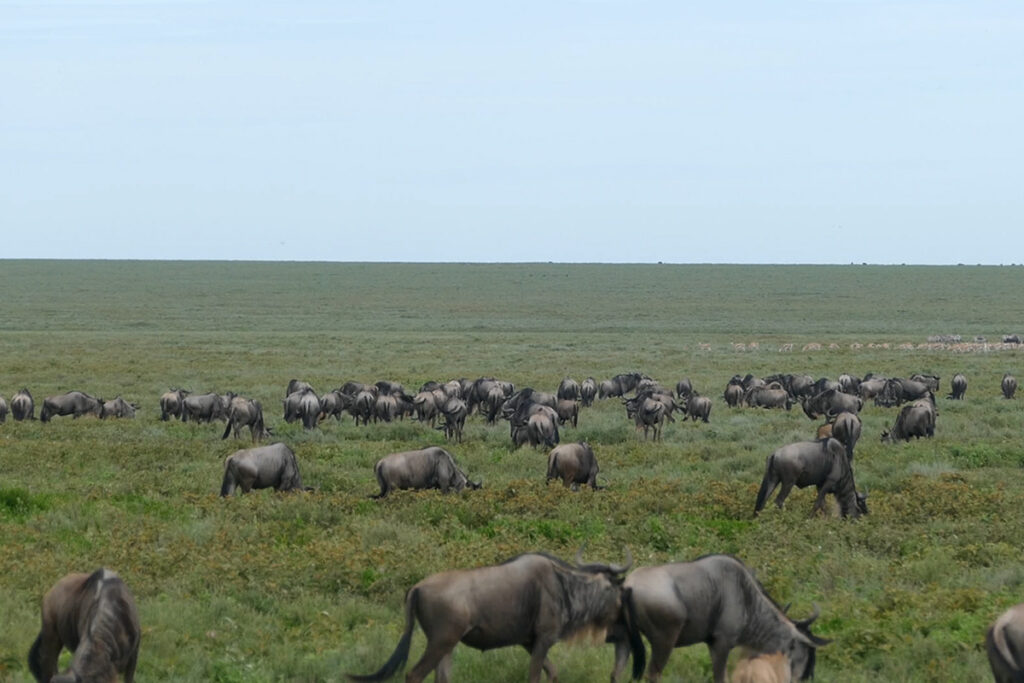Standing at 19,341 feet, Kilimanjaro is the tallest free-standing mountain in the world and successfully summiting it is an extraordinary achievement. However, the success rate might surprise you; only about 65% of climbers actually reach Uhuru Peak. These figures are influenced by several factors, including route choice, preparation, and altitude sickness.
Kilimanjaro’s climb has a vast history, with Hans Meyer making the first successful ascent in 1889, setting the precedence for future mountaineers. The Machame route is among the most popular, with a higher success rate due to its more gradual ascent. Conversely, the Marangu route, often referred to as the “Coca-Cola route,” has a much quicker ascent, leading to a lower success rate.

Success Rate: Climbing Kilimanjaro Successfully
Climbing Kilimanjaro is a dream for many, but only about 65% of climbers reach the summit. This success rate can be affected by a variety of factors. The route chosen, level of preparation, and how well climbers adjust to the altitude all matter. Kilimanjaro is not a technical climb but requires physical stamina. Understanding these elements helps in planning a successful ascent.
Various routes offer different experiences and success rates. The Machame Route, known as the “Whiskey Route,” has a higher success rate due to its gradual incline. In contrast, the Marangu Route, or “Coca-Cola Route,” has a lower success rate because of its rapid ascent. Here’s a quick look at success rates by route:
| Route | Success Rate |
|---|---|
| Machame | 70-80% |
| Marangu | 50-60% |
| Lemosho | 90-95% |
Proper preparation is vital for a successful climb. Adequate training, proper gear, and acclimatization are key. Many climbers spend months training and conditioning their bodies. Joining a reputable trekking company also increases the likelihood of summiting. They offer guided services that include acclimatization plans and essential tips for the climb.
Altitude sickness is a significant hurdle for many climbers. Symptoms include headaches, nausea, and dizziness. To mitigate these symptoms, climbers should ascend slowly and stay hydrated. Taking medication like Diamox can also help. Always listen to your body and your guides.
7 Hard Truths about Climbing Kilimanjaro (That Nobody Wants to Hear)
Overall Success Rate and Influencing Factors
The overall success rate for climbing Kilimanjaro hovers around 65%. This means that out of every 100 people who attempt the climb, about 65 make it to the top. Factors like weather, physical readiness, and altitude can greatly influence these numbers. Good weather conditions can ease the climb, but unexpected storms make it tough. Training and acclimatization are crucial for achieving climbing success.
Many climbers face challenges due to altitude sickness. As you ascend, the air gets thinner, making it harder to breathe. This lack of oxygen can lead to symptoms like headaches and nausea. To improve chances, climbers should spend more time acclimatizing. Slow acclimation helps your body adjust gradually.
The choice of route also plays a significant role in the success rate. Some routes offer a steady incline with more days, giving the body time to adapt. Here’s a comparison of success rates for key routes:
| Route | Days | Success Rate |
|---|---|---|
| Marangu | 5-6 | 50-60% |
| Machame | 6-7 | 70-80% |
| Lemosho | 7-9 | 90-95% |
Proper gear is essential to withstand Kilimanjaro’s challenging conditions. This includes layered clothing and strong boots. Choosing equipment suited for cold and wind is vital. A good sleeping bag ensures rest during chilling nights. Good quality gear can make a significant difference in climbers’ experiences and outcomes.
Routes to Kilimanjaro: Success Rates Compared
Different routes to Kilimanjaro offer unique experiences and chances of reaching the summit. The Marangu Route, known as the “Coca-Cola Route,” is the oldest and easiest, with a success rate around 50-60%. It has hut accommodations rather than tents, making it a common choice for beginners. However, its rapid ascent means less time for acclimatization.
The Machame Route, or “Whiskey Route,” is more challenging but has a higher success rate of about 70-80%. This route is favored for its scenic views and varied terrains. Climbers spend more days on this route, which allows better acclimatization. This generally leads to higher summit success rates.
The Lemosho Route is considered one of the most beautiful. It generally takes 7-9 days, with a stunning success rate of 90-95%. This route provides more time for the body to adjust, resulting in better overall ascent outcomes. Trekkers often see diverse landscapes and fewer crowds.
The Rongai Route approaches from the north. It has success rates between 80-85%. This route offers a unique perspective of Kilimanjaro, avoiding the crowded southern routes. Here is a quick comparison of success rates:
| Route | Days | Success Rate |
|---|---|---|
| Marangu | 5-6 | 50-60% |
| Machame | 6-7 | 70-80% |
| Lemosho | 7-9 | 90-95% |
| Rongai | 6-7 | 80-85% |
The Importance of Proper Preparation for Successful Ascent
Preparation is key when climbing Kilimanjaro. This involves both physical and mental readiness. Training for several months before the climb is essential. This includes cardiovascular exercises, hiking with a weighted backpack, and strength training. These activities boost fitness levels, helping you tackle the mountain’s challenges.
Besides physical fitness, selecting the right equipment is crucial. Proper gear ensures comfort and safety during the climb. A well-fitted hiking boot and layered clothing make a significant difference. Remember, temperatures can drop drastically, so warm clothing is necessary. Having the right gear can greatly affect your climb’s outcome.
Acclimatization is another critical preparation aspect. Your body needs time to adjust to high altitudes to prevent altitude sickness. Many climbers opt for routes allowing more acclimatization days. This helps the body adapt and reduces the risk of unpleasant symptoms. Better acclimatization increases your chances of reaching the summit.
Knowledge and research about the climb are indispensable. Understanding the different routes and their demands helps in planning. Joining a good trekking company provides support systems and expert guidance. Being informed about common challenges and solutions is invaluable. It equips climbers to handle unexpected setbacks.
Nutritional preparation plays a vital role too. A balanced diet rich in carbohydrates and proteins boosts energy levels. Staying hydrated throughout the climb is equally important. Packing high-energy snacks is advisable. Proper nutrition supports the physical demands of the trek.
A positive mindset directly influences performance on the mountain. Mental preparation involves visualizing reaching the summit and setting realistic goals. Staying motivated despite setbacks ensures you keep moving forward. Support from fellow climbers and guides can uplift spirits. A positive attitude drives perseverance, especially on challenging days.
How Altitude Sickness Affects Success Rates
Altitude sickness is a common hurdle for those climbing Kilimanjaro. It occurs when the body struggles to adapt to higher altitudes. This sickness can start as low as 8,000 feet. Symptoms include headaches, nausea, and dizziness. These can severely impact a climber’s success rate.
As you ascend, the air pressure decreases, making it difficult to get enough oxygen. Less oxygen leads to the symptoms of altitude sickness. If untreated, it can develop into more severe conditions like High Altitude Pulmonary Edema (HAPE) or High Altitude Cerebral Edema (HACE). These are life-threatening and require immediate descent. Understanding these risks is crucial for climbers.
Strategies to manage altitude sickness are vital. Ascending slowly is one such strategy. Here are some other tips:
- Stay hydrated to help your body adjust.
- Avoid alcohol and caffeine, as they can dehydrate you further.
- Eat carbohydrate-rich foods to fuel your body.
- Consider medications like Diamox with medical advice.
Choosing a longer route also allows for better acclimatization. Routes like Lemosho offer more days to adjust to the altitude. This extra time can make a significant difference in reducing symptoms. It boosts the chances of successful summit attempts. More time spent acclimatizing often correlates to higher success rates.
It’s essential to listen to your body. If symptoms persist or worsen, descending is the best solution. Pushing through severe symptoms can be dangerous. Guides are trained to identify symptoms and offer advice. Early action can prevent complications and keep climbers safe.
Tips to Improve Your Chance of Successfully Climbing Kilimanjaro
Preparation is key to improving your chance of successfully climbing Kilimanjaro. Start by building your physical fitness months in advance. Focus on cardiovascular exercises, strength training, and hiking with a weighted backpack. Regular practice helps your body prepare for the climb’s physical demands. Engaging in these activities consistently is vital.
Choosing the right gear is essential. Invest in a comfortable pair of hiking boots and wear them in before the climb. Layered clothing is important, as temperatures can vary greatly. Ensure you have a high-quality sleeping bag suitable for cold conditions. Proper equipment can make a significant difference in your comfort and safety.
Acclimatization is critical for success. Select a route that allows for a gradual ascent and includes more days. This gives your body time to adjust to the higher altitude. Here are some popular routes with their acclimatization potential:
| Route | Days | Acclimatization Potential |
|---|---|---|
| Marangu | 5-6 | Medium |
| Machame | 6-7 | High |
| Lemosho | 7-9 | Very High |
Staying hydrated throughout the climb is crucial. Drink plenty of water to help your body acclimatize. Avoid alcohol and caffeine, as they can contribute to dehydration. Eating a balanced diet with carbohydrates and protein provides the energy needed. Keeping your body well-nourished supports sustained physical exertion.
Mental preparation also plays a significant role. Visualize reaching the summit and set small, achievable goals. Remain positive and stay focused, despite the challenges. Support from fellow climbers and guides can boost your morale. A determined mindset can help you endure difficult moments during the climb.
Key Takeaways
- Success rates vary depending on the chosen climbing route.
- Lemosho and Machame routes offer better acclimatization chances.
- Training and physical preparation are essential for climbers.
- Proper gear and hydration can boost success rates significantly.
- Weather conditions greatly affect the climb’s outcome.




